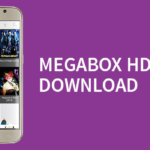If you’ve developed an app or even are just planning a development project, you probably know what push notifications are. Push notifications serve as a great marketing tool because they’re a way for you to keep users engaged and they help you stay in contact with users at relevant points.
While push notifications can play a significant role in the success of your app, there are a lot of ways they can go wrong as well.
“If you go overboard and use this method too often, it can cause users to mute your push notifications,” according to Ian Blair of Buildfire.
So how do you achieve the balance between using them as effective marketing without being bothersome to app users? That’s the important question and below are some things to think about and consider implementing.
Short and Simple
While a push notification might look somewhat like a text message on a user’s screen, you have to remember that it’s not. One way that it’s different is that users can’t open a push notification to read more in the same way they can text.
Want an easy strategy to improve your click-through rates for your push notifications?
Shorten them. Shorter push notifications with lower word counts tend to perform better than their longer counterparts.
As a side note, it’s not a good idea to send out SMS messages as opposed to push notifications. Users tend to be turned off by the spammy nature of SMS marketing messages more often than not.
Location-Based Push Notifications
You don’t want to send too many push notifications. Once someone turns them off for your app, it’s highly unlikely they will reactivate them, and that form of contact is completely gone.
If you have an app or business that relies on location-based marketing, you can consider geofencing technology. This is good because it keeps push notifications highly relevant based on a user’s location. It’s going to reach them at the right time and place, and feel more valuable to them than it would otherwise.
What Are the Biggest Turn-Offs Regarding Push Notifications?
While every audience and every person who downloads your app is going to have different preferences, some general overarching concepts seem to be turn-offs to people as far as push notifications go.
Irrelevant push notifications are first on the list of turn-offs. After that are receiving too many in general, and having a lack of interest in these notifications regardless of what they are.
You have to keep in mind these turn-offs not only from the perspective of sending out the notifications but also even getting users to accept them in the first place.
If you want people to accept your notifications, make sure that you time your opt-in request correctly. Don’t make the request appear immediately when someone first opens your app. Give them a chance to get familiar with the app and start to like it before you ask.
If possible, before you send out any actual notifications, try to gather data on the user and design engaging notifications based on their actions.
Don’t Use Push Notifications to Replace Email Communications
Email communications and push notifications are two separate things, and they should be treated as such. Email communications can be longer and more in-depth and include details and also things like shipping status and updates. If you try to do too much through push notifications, your users are going to feel bombarded. Keep it separate.
Consider Logistics
One example of logistics that can be relevant to push notifications is timing. If you have customers or users all over the country and the world, you can’t send a blanket notification because it’s going to reach them at inconvenient hours. You’ll have to think about the local time zone and the specific time of day before you send notifications.
Of course, beyond that, there are going to be certain notifications that are most relevant at certain times of day so that factors into the equation as well.
Finally, when you’re sending out these kinds of notifications that are going to be directly in front of customers and app users, you want to evoke emotions. You have to be careful about the type of emotions. You want only positivity with these notifications because these are a way to build trust and a relationship. It’s almost like you’re way of developing a conversational rapport with your app users, so don’t try to evoke any emotion other than positivity in that respect.






